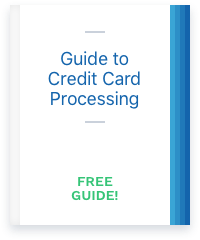Flat rate credit card processing is an expensive illusion based more on clever marketing than reality. What some companies advertise as a competitive flat rate is actually oversimplified and expensive pricing that conceals the true costs to process.
- What is flat rate pricing?
- Flat Rate Pricing is An Illusion
- Truly Competitive Pricing vs. Flat Rate Pricing
- Arguments for Flat Rate Pricing
What is flat rate pricing?
Flat rate is an increasingly popular pricing model for credit card processing. The most prevalent version of flat rate processing is where a company charges its clients based on a fixed percentage of volume. Common flat rates are currently around 2.75% – 2.9% for swiped transactions. Some flat rate models also include a per-transaction fee, often in the range of 10 – 30 cents per transaction.
Note that this is different than subscription flat rate pricing, where the costs of interchange are still visible to the business.
Read about Subscription Flat Rate Pricing.
Flat Rate Pricing is An Illusion
The fundamentals of credit card processing make it virtually impossible for a processor to charge a competitive flat rate and remain profitable.
Each time a business processes a credit card transaction, it is actually paying three separate fees. It pays a fee to the bank that issued the customer’s card, called an interchange fee. It pays a fee to the card brand (Visa, Mastercard, or Discover) whose logo is on the customer’s card, called an assessment. And it pays a fee to a credit card processor as a markup.
Interchange fees and assessments are fixed costs that remain the same regardless of which credit card processing company a business uses. Assessments remain fairly consistent across different types of transactions, but interchange rates fluctuate over about 280 different categories.
See for yourself:
Visa interchange
MasterCard interchange
The interchange rate assigned to an individual credit card transaction varies from 0.05% to 3.17% depending on several variables such as card type, card brand, processing method, settlement time, and more.
A processor that offers its clients flat rate credit card processing still has to pay interchange and assessments; it just does so behind the scenes without its clients knowing.
For example, Square famously charged its customers a flat rate of 2.75% for swiped and 3.50% for keyed transactions that only cost it about 1.40% and 1.95% on average. The difference between interchange and its flat rate is Square’s markup.
Companies that offer this type of pricing are not actually “true” processors. Instead, they are aggregators that use one merchant account to process transactions for thousands of businesses.
As I’ll explain in greater detail below, this type of flat rate pricing is inherently uncompetitive because an aggregator has to ensure its flat rate is high enough to cover all possible base costs associated with interchange and assessments as well as its markup, and base costs vary greatly. If the processor doesn’t set its rate high enough, it will lose money – something that processing companies are not in the habit of doing.
Truly Competitive Pricing Vs. Flat Rate Pricing
Flat rate credit card processing is not meant to be competitive; it’s meant to be easy to understand. Businesses that get fed up trying to decipher credit card processing statements often gravitate toward flat rate pricing simply because they feel they have a better handle on charges.
A pricing model called interchange plus pricing allows businesses to have the best of both worlds — a flat, fixed markup from the processor and competitive pricing.
Interchange Plus Pricing
We’ve explained interchange plus pricing in detail before. Our credit card processing guide covers the finer points of why interchange plus is more competitive and transparent than other forms of pricing, including flat rate. In short, interchange plus pricing separates the costs of interchange and assessments from the processor’s markup.
Arguments for Flat Rate Pricing
Flat rate pricing has two redeeming qualities; it’s simple and it is sometimes offered without a transaction fee, which can be beneficial for businesses with lots of transactions. With flat rate pricing, you’ll also have known costs that don’t change, making it easier to calculate what you’ve paid or can expect to pay based on your volume and ticket size.
Known Costs
It’s relatively easy to forecast what charges will be with fixed-rate pricing. Simply multiply gross sales by the processor’s rate to calculate charges.
Simplicity seems like a small comfort considering flat rate pricing is typically ~20% more expensive than other forms of pricing, but nonetheless, some businesses are willing to pay to have a flat rate. Paying more for convenience may make sense for your business, just remember that in most cases you will be paying more. Don’t confuse simplicity with low cost.
Small Tickets
Some processors offer flat rate without a transaction fee, though this is less common now. If you can find it, that type of pricing is an ideal pricing model for businesses with very low average tickets.
For example, 2.75% of a $3 sale is only $0.0825, which is lower than what the processor pays in interchange charges. So, aggregators that don’t charge a transaction fee actually lose money by processing for businesses with very small average tickets. Square lost $30 million processing for Starbucks because of the low average transaction total, which is why it now charges a transaction fee.
Don’t be fooled by simplicity. Instead, side step fancy marketing ploys like flat rate pricing for truly competitive rates and fees like those offered by processors here in CardFellow’s marketplace. CardFellow only allows processors to use true pass-through pricing, making it easy for our clients to compare and select an exceptionally competitive processing solution.
Curious what you’ll pay for processing if you don’t use a flat rate solution? Find out now.



